Siemens: New Campus in Zug
Headquarters of Siemens Building Technologies and headquarters of Smart Infrastructure Operating Company as of April 1, 2019. Total investment: 250 million Swiss francs (CHF). Refe...
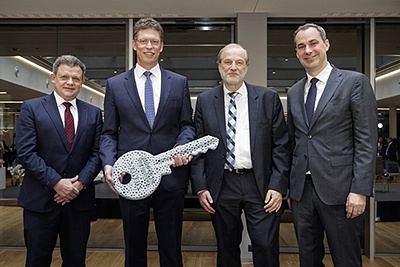
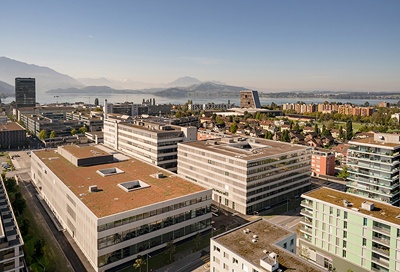
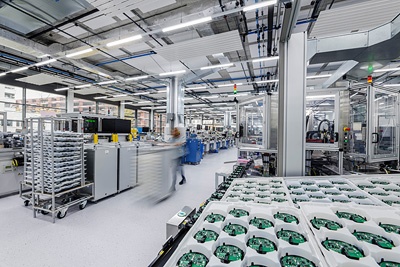
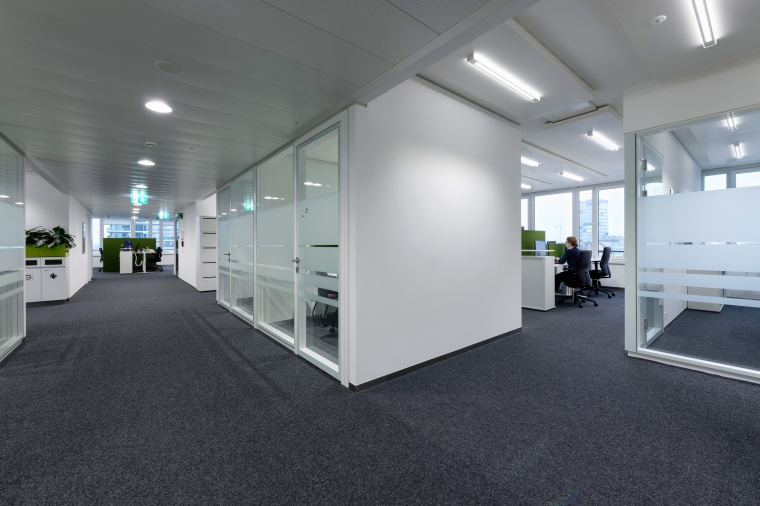
Headquarters of Siemens Building Technologies and headquarters of Smart Infrastructure Operating Company as of April 1, 2019. Total investment: 250 million Swiss francs (CHF). Reference project for smart buildings.
Siemens AG inaugurated its new campus in Zug on December 5th. The Siemens Zug campus features a new office building with 1,000 work spaces and a newly constructed production building. The investment volume for new buildings, renovations and related measures amounts to CHF 250 million. The campus is the international headquarters of the Siemens Building Technologies (BT) Division, which has 29,000 employees. Last year it posted worldwide sales of 6.6 billion euros. As Siemens reference projects, the buildings feature innovative building technology.
"Siemens is one of Switzerland's largest employers. We employ over 6,000 people here, including about 300 apprentices said Joe Kaeser, Chairman of the Siemens AG Managing Board. "Building Technologies with its headquarters in Zug will benefit more from digitalization than virtually any other industry. Next year, building technology will become a core element of the new operating company Smart Infrastructure (SI). Its global headquarters will then also be in Zug."
Zug has been home to Siemens Building Technologies since 1998, when Siemens took over the industrial activities of Elektrowatt AG. "With our investments in research and development, we are using the opportunities of digitalization to steadily evolve into a smart building company," explained Matthias Rebellius, CEO of Siemens Building Technologies. "We offer a full range of building technologies for fire detection, security and automation solutions to optimize sustainability, total cost of ownership and the user experience in buildings. Smart buildings are based on comprehensive analytics and use of digital building data." Rebellius called the campus a reference project that illustrates the opportunities of digitalization in building technology, energy efficiency and future-oriented working. "A smart building is flexible, it learns from previous interactions and it continually adapts to the needs of building users, thus actively contributing to their success."
Construction of the office and production buildings began in May 2016 and was completed in July 2018. The Siemens Zug campus is one of the first new projects to use Building Information Modeling (BIM) for design and construction. The digital twin – a 3D model of the building, enhanced with technical information relevant for later operations – is the foundation for efficient, cost-optimized and forward-looking building management.
The campus complex is equipped with building automation, security and fire safety technology from Siemens BT. Particular emphasis was placed on sustainability and energy efficiency of the buildings. The office building meets the highest requirements of the LEED standard, earning it a Platinum certification; the production building meets the criteria for LEED Gold certification. An integrated building automation system with energy optimization based on the Desigo CC integrated building management platform controls the energy consumption and all the disciplines in the buildings. Energy-efficient heat pumps use water from Lake Zug as a heat source and for direct cooling. The campus buildings do not need fossil fuels to generate energy. The heating, ventilation and air conditioning systems are equipped with heat and cold recovery systems. Even the compressed air systems in production have an energy recovery system for water heating. The buildings have green roofs, and the office building uses approximately 1,500 m3 of rainwater. A photovoltaic system on the roof of the production building will go into operation in the spring of 2019.
With its 56 x 56 meter footprint, the seven-story office building can accommodate 1,000 employees. It has 32,000 m2 of gross floor space, including 18,400 m2 of office space and 11,000 m2 in the two-story underground garage with 250 parking spaces. The building has a height of 25 meters.
The three-story production building has a height of 16 meters, a footprint of 125 x 50 meters and two production floors. The second upper floor of the building has 120 office spaces as well as additional space for occupational training and a laboratory. Delivery docks, nitrogen tanks and waste containers are integrated into the building to minimize noise for the neighboring residential area and to make it architecturally attractive.
The campus also includes an existing office and production building, scheduled for modernization in 2021. Beginning in late 2022 it will house the approximately 450 employees of BT research and development. The city of Zug is taking over the former Siemens office building.
The Siemens Zug campus is the international headquarters of the Siemens Building Technologies (BT) Division. The Siemens Building Technologies Division is not only a leading developer and supplier of products, systems solutions and services in building automation, energy efficiency, fire safety and security, but also a pioneer in building digitalization. In 2018, BT had more than 29,000 employees in more than 400 locations worldwide and posted sales totaling 6.6 billion euros. Building Technologies has been located in Zug since the takeover of the industrial activities of Elektrowatt in 1998. More than 1,700 employees work for BT in Zug.
Business Partner
Siemens Smart InfrastructureTheilerstrasse 1a
6300 Zug
Switzerland
most read
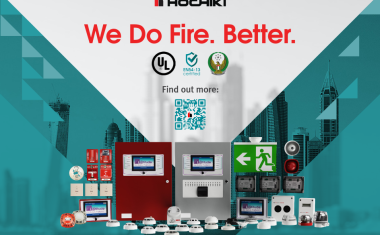
Hochiki Middle East Brings Over 100 Years of Fire Safety Expertise to Intersec Saudi Arabia 2025
Hochiki Middle East exhibits at Intersec Saudi Arabia 2025
Media Kit 2026 GIT SECURITY International
Advertise with the international number one - with GIT SECURITY International. Media kit 2026 for download.

Hochiki Fire Detection System Secures Villa San Carlo Hotel
Wireless and hardwired fire alarm systems can be specified in hotel projects that demand architectural sensitivity

Leonardo Enhances EU Border Security with Entry/Exit System Data Protection
Leonardo secures sensitive data in the EU’s new Entry/Exit System, boosting border control and cybersecurity

Ping Identity Strengthens Defense Against AI-Driven Impersonation with Privacy-Preserving Biometrics
Ping Signs agreement to acquire Keyless, expanding privacy-first authentication across the entire user journey









